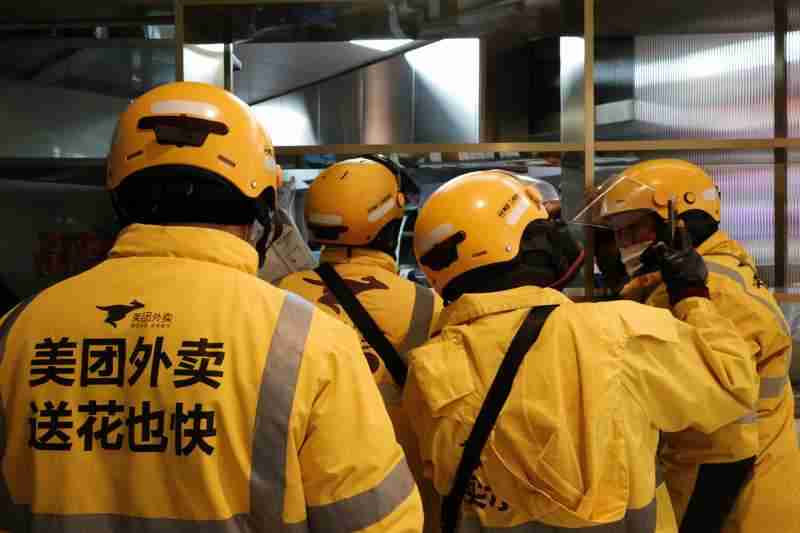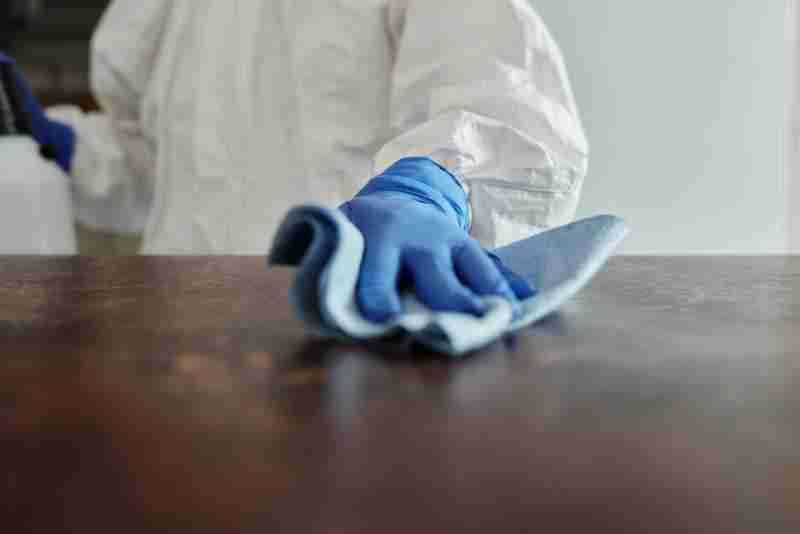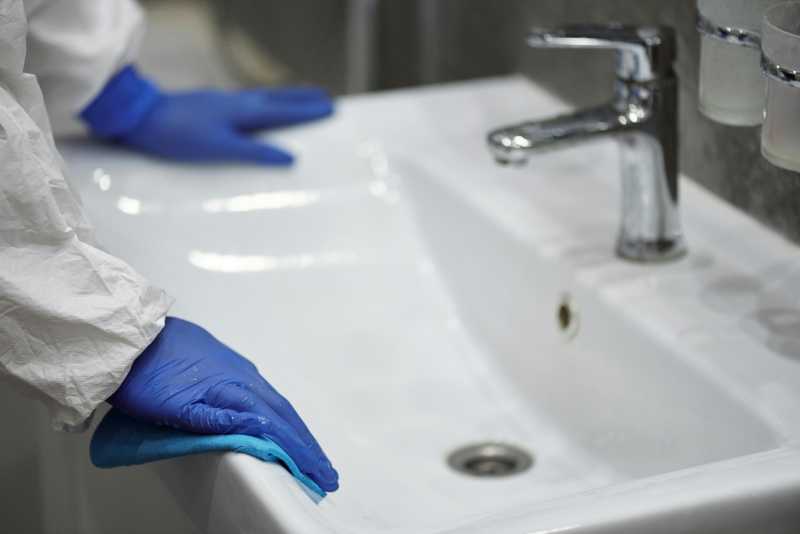When it comes to biohazard cleanup, ensuring safety is paramount. At Projekt Restoration, we understand the critical importance of handling biohazardous materials with the utmost care and precision. As your go-to experts in water, fire, and mold restoration, we also specialize in mold assessment, biohazard cleanup, and comprehensive reconstruction services. Whether dealing with hazardous waste, bloodborne pathogens, or other dangerous substances, our team is equipped with the knowledge and tools to manage these situations safely and effectively. In this blog, we will explore essential safety measures and best practices for biohazard cleanup, ensuring that you are well-informed and prepared to handle these sensitive tasks.
Understanding Biohazards: What You Need to Know

Understanding biohazards is crucial for ensuring safety during biohazard clean-up. Biohazards refer to biological substances that pose a threat to the health of living organisms, primarily humans. These can include bacteria, viruses, fungi, and other microorganisms, as well as biological toxins. Proper knowledge and handling of biohazards are essential to prevent contamination and the spread of diseases.
Biohazards can be found in various environments, including hospitals, laboratories, and even homes. Common examples include bloodborne pathogens like HIV and Hepatitis B, as well as airborne pathogens such as tuberculosis. Understanding the nature of these hazards helps in implementing effective safety measures.
"Biohazards can cause serious health risks if not managed properly. Proper training and equipment are essential for safe biohazard clean-up."
To ensure safety during biohazard clean-up, it is important to follow these steps:
- Identify the type of biohazard and assess the level of risk.
- Use appropriate personal protective equipment (PPE) such as gloves, masks, and gowns.
- Follow proper decontamination procedures to clean and disinfect the affected area.
- Dispose of biohazardous waste according to local regulations.
- Conduct regular training and drills for personnel involved in biohazard clean-up.
For more detailed information on biohazard clean-up, you can visit our biohazard clean-up page. Additionally, if you need professional assistance, feel free to contact us.
According to the Centers for Disease Control and Prevention (CDC), "proper handling and disposal of biohazardous materials are critical to preventing the spread of infectious diseases." For further reading, you can refer to the CDC’s guidelines on biohazard safety here.
Understanding biohazards and implementing appropriate safety measures can significantly reduce the risks associated with biohazard clean-up, ensuring a safer environment for everyone involved.
Essential Personal Protective Equipment (PPE) for Biohazard Clean Up

When dealing with biohazard clean up, ensuring the safety of all personnel involved is paramount. Essential Personal Protective Equipment (PPE) plays a critical role in safeguarding individuals from potential health risks associated with biohazardous materials. The primary components of PPE for biohazard clean up include gloves, masks, gowns, face shields, and respirators. Each piece of equipment serves a specific purpose and provides a barrier against contaminants.
Gloves are crucial for protecting hands from direct contact with hazardous substances. They should be made of durable materials like nitrile or latex and be resistant to punctures and chemicals. Masks and respirators are essential for preventing the inhalation of harmful particles and pathogens. Depending on the level of risk, a simple surgical mask may suffice, or a more advanced N95 respirator may be necessary.
Gowns and coveralls provide full-body protection, preventing contaminants from coming into contact with the skin and clothing. These should be made of fluid-resistant materials to offer maximum protection. Face shields and goggles protect the eyes and face from splashes and airborne particles, ensuring comprehensive coverage.
Proper training on the correct use and disposal of PPE is essential to maintain a safe working environment. For more information on biohazard clean up and the necessary precautions, visit our biohazard clean up page. If you need assistance or have any questions, feel free to contact us. Additionally, our calculator can help you estimate the cost of biohazard clean up services.
Step-by-Step Guide to Safe Biohazard Clean Up Procedures
Ensuring safety during biohazard clean up is paramount to protect both the individuals performing the task and the environment. This step-by-step guide outlines essential procedures to ensure a thorough and safe biohazard clean up.
First, assess the situation to identify the type and extent of the biohazard. This initial evaluation helps in determining the appropriate protective gear and cleaning agents required. Next, don the necessary personal protective equipment (PPE) such as gloves, masks, and gowns to prevent exposure to harmful substances.
Contain the affected area to prevent the spread of contaminants. Use barriers and signage to restrict access. Carefully remove any solid waste and dispose of it in designated biohazard containers. For liquid spills, use absorbent materials to soak up the substance before cleaning the surface with appropriate disinfectants.
Thoroughly clean and disinfect all surfaces, ensuring that no traces of the biohazard remain. Utilize specialized cleaning agents that are effective against the specific type of biohazard. After cleaning, properly dispose of all used materials and PPE in biohazard disposal bags.
Finally, conduct a post-cleanup assessment to ensure that the area is safe for re-entry. This may involve air quality testing or surface swabbing to confirm the absence of contaminants. For professional assistance, consider reaching out to experts in biohazard clean up. Visit our biohazard clean up page for more information. If you need personalized advice, feel free to contact us.
By following these steps, you can ensure a safe and effective biohazard clean up, protecting both health and the environment.
Proper Disposal Methods for Biohazardous Materials
Proper disposal of biohazardous materials is crucial to ensuring safety during biohazard clean-up. These materials can include blood, bodily fluids, and other potentially infectious substances. To mitigate risks, it is essential to follow stringent disposal protocols. Firstly, all biohazardous waste should be segregated from regular waste and placed in clearly marked, leak-proof containers. These containers should be labeled with the biohazard symbol to alert anyone handling them of the potential danger.
Once segregated, the waste should be treated to neutralize any infectious agents. Common treatment methods include autoclaving, which uses high-pressure steam to sterilize the materials, and chemical disinfection, which involves using strong disinfectants to kill pathogens. After treatment, the waste can be safely transported to a licensed disposal facility.
It is also important to ensure that all personnel involved in the disposal process are adequately trained and equipped with personal protective equipment (PPE) such as gloves, gowns, and face shields. This minimizes the risk of exposure and contamination.
For businesses and individuals seeking professional assistance, services like biohazard clean-up are available to handle the complexities of proper disposal. Additionally, consulting with experts can provide valuable guidance on compliance with local regulations and best practices. For more information or to get a quote, you can use our calculator or contact us directly. Ensuring proper disposal methods not only protects human health but also the environment, making it a critical component of biohazard management.
Decontamination and Sanitization Techniques
Decontamination and sanitization are critical components in ensuring safety during biohazard clean-up. These techniques are designed to eliminate harmful pathogens and contaminants, thereby reducing the risk of infection and ensuring a safe environment. The process begins with a thorough assessment of the affected area to identify the extent of contamination. Specialized cleaning agents and disinfectants are then used to neutralize biohazards. High-touch surfaces are given particular attention, as they are more likely to harbor dangerous microorganisms.
Advanced methods such as ultraviolet (UV) light and ozone treatments may also be employed to ensure comprehensive decontamination. UV light is effective in breaking down the DNA of bacteria and viruses, rendering them harmless. Ozone treatments, on the other hand, oxidize organic materials, effectively eliminating pathogens. These techniques are particularly useful in areas that are difficult to reach with traditional cleaning methods.
Proper disposal of contaminated materials is another crucial aspect of the decontamination process. Items that cannot be effectively sanitized are safely removed and disposed of according to regulatory guidelines. This ensures that no residual contamination remains, further safeguarding the environment.
For those in need of professional biohazard clean-up services, it’s essential to choose a company with expertise in decontamination and sanitization. For more information on our comprehensive services, visit our biohazard clean-up page. If you have any questions or need immediate assistance, feel free to contact us. Additionally, you can use our calculator to estimate the cost of our services.
Training and Certification Requirements for Biohazard Clean Up
Ensuring safety during biohazard clean up is paramount, and proper training and certification are essential to achieve this. Professionals engaged in biohazard clean up must undergo rigorous training to handle hazardous materials safely and effectively. This training typically includes understanding the nature of biohazards, proper use of personal protective equipment (PPE), and the correct procedures for cleaning and disposing of hazardous materials.
Certification is equally important and often required by law. Certified biohazard clean up technicians must complete courses approved by recognized bodies such as OSHA (Occupational Safety and Health Administration) and the EPA (Environmental Protection Agency). These courses cover a range of topics, including bloodborne pathogens, hazardous communication standards, and respiratory protection.
Moreover, ongoing education is crucial as regulations and best practices evolve. Regular refresher courses ensure that technicians stay updated with the latest safety protocols and technological advancements in the field.
For those looking to hire a certified biohazard clean up service, it is advisable to verify the credentials of the technicians. Ensuring that the team is well-trained and certified can significantly reduce the risk of contamination and ensure a thorough and safe clean up process. If you need professional assistance, you can contact us for expert services. Additionally, for a detailed cost estimate, use our calculator tool. For more information on our biohazard clean up services, visit our biohazard clean up page.
Emergency Response and Incident Reporting Protocols
In the realm of biohazard clean-up, having robust emergency response and incident reporting protocols is crucial for ensuring safety. These protocols are designed to swiftly address any unforeseen incidents, minimizing risks to both personnel and the environment. Immediate response is vital when dealing with biohazards, as delays can exacerbate contamination and health hazards.
First and foremost, all personnel must be thoroughly trained in emergency procedures, including the use of personal protective equipment (PPE) and decontamination processes. In the event of an incident, such as a spill or exposure, the affected area should be isolated immediately to prevent further contamination. Emergency response teams should be equipped with the necessary tools and knowledge to handle various biohazard scenarios effectively.
Incident reporting is equally important. Detailed documentation of any incidents, including the nature of the biohazard, the response actions taken, and the outcomes, is essential for continuous improvement of safety protocols. This information helps in identifying patterns and potential areas for improvement, ensuring that future incidents are managed more efficiently.
For comprehensive biohazard clean-up services, it’s crucial to work with professionals who adhere to stringent safety standards. At Projekt Restoration, we prioritize safety and efficiency in all our operations. Whether you need assistance with water damage or content cleaning, our team is equipped to handle emergencies with precision and care. Contact us today to learn more about our comprehensive services and how we can assist you in maintaining a safe environment.
In conclusion, ensuring safety during biohazard clean-up is not just a regulatory requirement but a moral imperative to protect the health and well-being of everyone involved. By adhering to stringent safety protocols, utilizing appropriate personal protective equipment, and employing trained professionals, we can mitigate the risks associated with biohazardous materials. Continuous education and awareness are crucial in maintaining a safe environment, as is the proper disposal of hazardous waste. Ultimately, a meticulous and informed approach to biohazard clean-up not only safeguards individuals but also contributes to the broader goal of public health and environmental preservation. Remember, safety is a shared responsibility, and through collective diligence, we can create a safer world for all.





